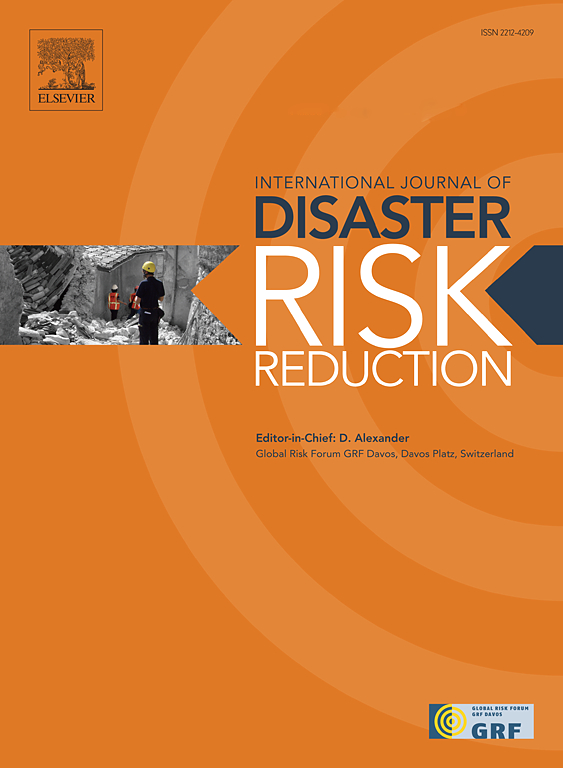Modeling residents’ long-term adaptation to geohazards in mountainous regions using agent-based models and Bayesian networks
IF 4.2
1区 地球科学
Q1 GEOSCIENCES, MULTIDISCIPLINARY
International journal of disaster risk reduction
Pub Date : 2025-02-13
DOI:10.1016/j.ijdrr.2025.105279
引用次数: 0
Abstract
In mountainous settlements threatened by geohazards, various adaptive behaviors undertaken by residents to cope with long-term geohazard risk exhibit characteristics of bounded rationality. The spatiotemporal characterization of such collective adaptive behaviors offers significant insights into settlement evolution. Considering a geohazard-prone mountainous region in China as an example, we employ face-to-face questionnaire surveys and spatial data mining to investigate residents' long-term adaptive behaviors to geohazards. We constructed a comprehensive simulation model that integrates an agent-based model (ABM), geographic information systems, and a Bayesian networks (BN). This model meticulously simulates the decision-making processes of residents, influenced by policies, social dynamics, and environmental factors. A notable innovation in our study is the introduction of peer effects into the simulation model, a novel approach that reflects the interdependent and imitative nature of residents' adaptation processes. We also consider multiple scenario combinations to analyze behavioral patterns and collective emergence phenomena under different disaster shocks. The findings indicate that an increase in disaster occurrence probability prompts more residents to relocate to safer areas and heightens their disaster preparedness awareness. Moreover, our results show that different scenarios significantly affect residents' behavioral choices and sensibilities; interventions such as mandatory relocation and disaster subsidy policies can alter residents' adaptation strategies. The developed model offers a novel perspective and empirical foundation for geohazard risk management. This study elucidates the long-term evolutionary patterns of settlement aggregation and the phenomenon of collective emergence, thereby addressing the gap in simulating residents’ adaptive behaviors under the prolonged impact of geohazards.
求助全文
约1分钟内获得全文
求助全文
来源期刊

International journal of disaster risk reduction
GEOSCIENCES, MULTIDISCIPLINARYMETEOROLOGY-METEOROLOGY & ATMOSPHERIC SCIENCES
CiteScore
8.70
自引率
18.00%
发文量
688
审稿时长
79 days
期刊介绍:
The International Journal of Disaster Risk Reduction (IJDRR) is the journal for researchers, policymakers and practitioners across diverse disciplines: earth sciences and their implications; environmental sciences; engineering; urban studies; geography; and the social sciences. IJDRR publishes fundamental and applied research, critical reviews, policy papers and case studies with a particular focus on multi-disciplinary research that aims to reduce the impact of natural, technological, social and intentional disasters. IJDRR stimulates exchange of ideas and knowledge transfer on disaster research, mitigation, adaptation, prevention and risk reduction at all geographical scales: local, national and international.
Key topics:-
-multifaceted disaster and cascading disasters
-the development of disaster risk reduction strategies and techniques
-discussion and development of effective warning and educational systems for risk management at all levels
-disasters associated with climate change
-vulnerability analysis and vulnerability trends
-emerging risks
-resilience against disasters.
The journal particularly encourages papers that approach risk from a multi-disciplinary perspective.
 求助内容:
求助内容: 应助结果提醒方式:
应助结果提醒方式:


